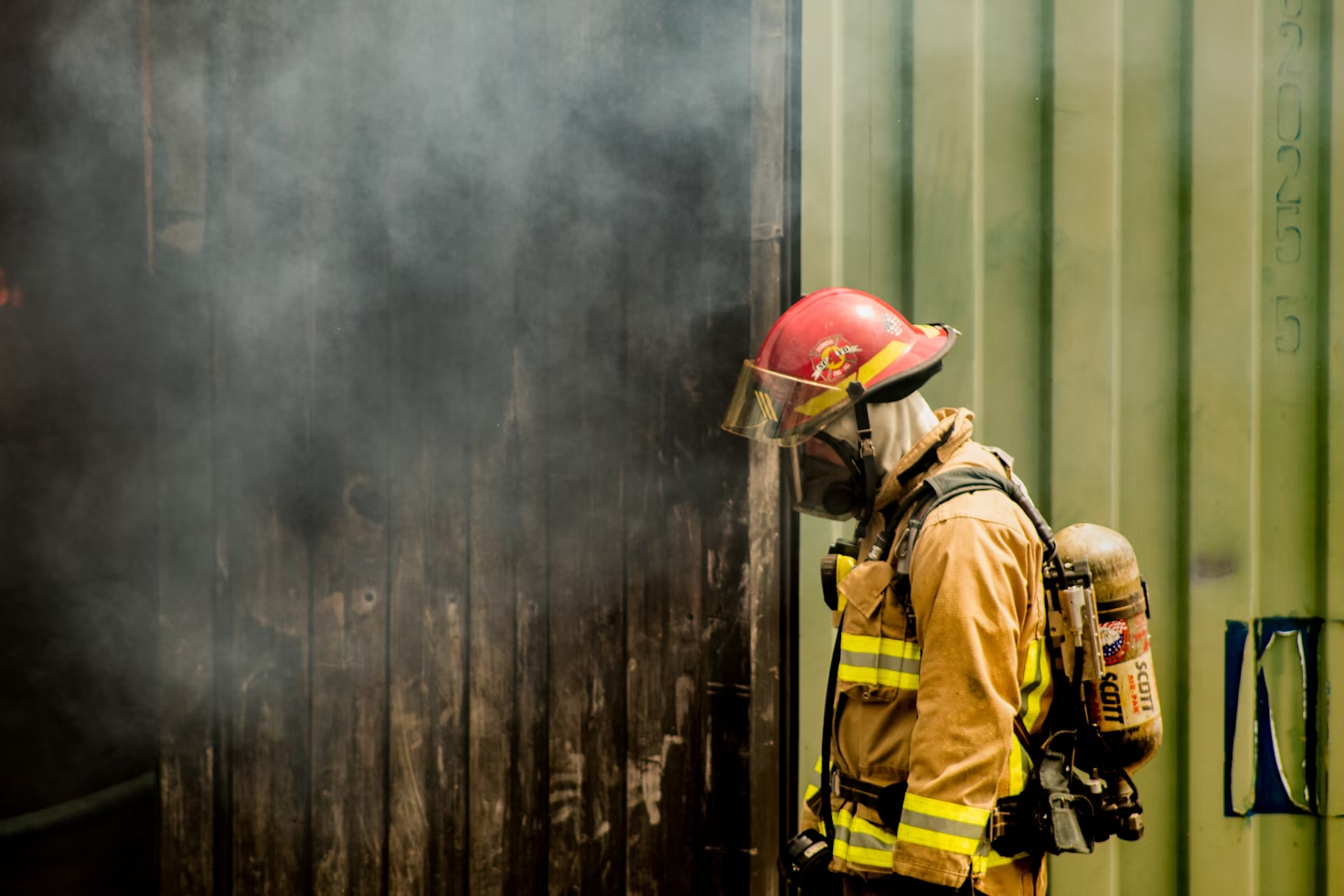In the realm of fire safety, a silent revolution is brewing. For decades, aqueous film-forming Foam (AFFF) had been the go-to solution for combating liquid fuel fires. Its effectiveness, however, came at a steep price.
The per- and polyfluoroalkyl substances (PFAS) in AFFF were once hailed for firefighting prowess, and firefighting foam was the gold standard. However, these toxins are now recognized as persistent environmental pollutants and being ‘carcinogenic to humans.’
From firefighters on the front lines to communities near AFFF-using facilities, the impact of these “forever chemicals” has sparked urgent calls for change.
As lawsuits mount and regulations tighten, the fire safety industry faces a pivotal moment. The quest for PFAS-free alternatives has catalyzed innovation, merging cutting-edge technologies with environmental consciousness.
This technological leap promises to replace AFFF and redefine fire suppression for the 21st century. It aims to offer hope to those affected and revolutionize safety across sectors.
An Overview of PFAS and AFFF
PFAS, a family of synthetic chemicals, is defined by its strong carbon-fluorine bonds. This unique molecular structure grants them exceptional resistance to various forms of degradation, making them valuable in numerous applications, from cookware to firefighting foam.
If reports from The Guardian are believed, these compounds are integral to 75% of water-resistant garments globally.
AFFF, a specialized firefighting foam, represents a significant PFAS contamination source. It was used, unchecked, in military, aviation, and industrial areas, leading to extensive environmental pollution.
Effects of PFAS Exposure
The longevity of AFFF-derived PFAS in the environment poses significant ecological challenges. These substances permeate soil and aquifers, creating persistent pollution zones. Their tendency to accumulate in biological systems magnifies their impact on ecosystems and human health.
TorHoerman Law aligns with scientific concerns on PFAS exposure’s adverse effects. PFAS’s persistence in the body (bioaccumulation) leads to health risks even at low levels.
PFAS has also been implicated in increased risk of cancers like testicular and pancreatic cancer. Beyond cancer, liver damage, immune system suppression, and thyroid disruption are emerging concerns.
JAMA Network also links prenatal PFAS exposure to lower birth weight and potential developmental issues.
Legal Backlash
The push for PFAS mitigation has been driven by escalating research and legal actions from affected families. Individuals exposed to these fatal chemicals and experiencing health issues may seek legal recourse through lawsuits.
A PFAS lawsuit can help victims claim compensation for years of neglect and mental and physical harm. For many, there were jobs lost and families shattered. The legal public outcry also holds the manufacturers of AFFF foams accountable, for they hid life-threatening side effects for profits.
Even though the pressure from the public is mounting, PFAS remediation faces substantial hurdles. This is due to the compounds’ stability and mobility, often surpassing conventional water treatment capabilities.
Let us take a look at some innovations in PFAS-remediation strategies and understand their role in safeguarding the environment and human health.
AI-Powered Fire Detection and Response Systems
Traditional fire detection methods, while valuable, often fall short in today’s complex environments. They typically rely on smoke or heat sensors. As a result, they may not respond in time in large spaces or struggle with false alarms in challenging conditions.
Moreover, they cannot predict fire behavior or provide detailed information about the nature and spread of a fire. This limits their effectiveness in modern, multifaceted settings.
Artificial Intelligence (AI) and Machine Learning (ML)
With AI, cutting-edge technology redefines how we detect, predict, and combat fires. AI-powered systems can process vast amounts of data from multiple sources, offering faster detection, more accurate predictions, and adaptive response strategies.
Machine learning algorithms, acting as digital sentinels, analyze data from sensors like thermal imaging and spectroscopic devices. These systems employ convolutional neural networks (CNN) to process visual and infrared data, detecting subtle fire signatures and reducing false alarms.
Furthermore, in its scientific report, Nature talks about using CNN and multimodal data for fire-spreading predictions. Such predictive analytics can integrate historical fire data, environmental factors, and real-time inputs to forecast fire behavior.
These AI-powered innovations dramatically reduce response times and enhance firefighter safety. It can provide a level of fire detection, prediction, and suppression that surpasses traditional methods, ushering in a new era of advanced fire safety.
Nanotechnology in PFAS-Free Fire Suppressants
As we seek safer alternatives to PFAS-laden fire suppressants, nanotechnology emerges as a promising frontier. This cutting-edge field offers innovative solutions that match the effectiveness of traditional firefighting foams and prioritize environmental safety and human health.
Let’s know more about this innovation in detail.
Advanced Nanoparticle-Based Foams
Nanoparticle-based foams represent a significant advancement in fire suppression technology. In this system, engineered nanoparticles, ranging from 1 to 100 nanometers in size, create a highly effective barrier against flames.
These particles, often composed of silica or metal oxides, enhance the foam’s stability and heat resistance. When applied, they form a network that traps air bubbles, creating a robust insulating layer that suffocates the fire.
Leveraging their extensive adsorption surface area, nanoparticles accelerate reactions with fire-released compounds, as stated by MDPI. These particles exhibit exceptional free radical generation capabilities.
This translates to the breakdown of complex environmental toxins into less harmful or even inert byproducts through a process known as Fenton chemistry.
Furthermore, the nanoparticles’ extensive surface area minimizes smoke dissemination. This reduces the volume of hazardous combustion products released and protects the environment and human health.
While these foams tackle active fires, prevention is equally crucial. This is where self-healing materials come into play.
Self-Healing Fire-Resistant Materials
Self-healing fire-resistant materials incorporate nanoencapsulated flame retardants. When exposed to heat, these nanocapsules rupture, releasing their contents and forming a protective char layer.
This dynamic response mechanism provides ongoing fire protection, even after initial damage. Complementing these reactive materials, the industry has produced proactive solutions that can be applied to various surfaces.
Nano-Coatings for Enhanced Protection
Nano-coatings offer another layer of defense. These ultra-thin films, often less than 100 nanometers thick, can be applied to various surfaces.
Composed of materials like graphene oxide or ceramic nanoparticles, these coatings form a thermal barrier, enhancing the fire resistance of treated objects.
Aerogel-Based Suppressants
Imagine a material so light it’s almost like holding a piece of frozen smoke, yet powerful enough to tame raging fires. That’s the magic of aerogel-based fire suppressants.
These materials are known for their extremely low density and nanoscale porosity. They offer remarkable thermal insulation and fire resistance.
NASA research highlights that aerogels are created through a specialized silica-gel process, resulting in a low-density, porous structure. Also, ScienceDirect reports that the nanopores in these materials typically measure between 2 and 50 nanometers.
When deployed against fires, aerogel suppressants create a stable, heat-resistant barrier. This layer impedes heat transfer and oxygen access, extinguishing flames and preventing rekindling.
Environmentally, these suppressants outperform traditional fluoride alternatives. Their non-toxic, chemically stable composition leaves no harmful residues, with some formulations even offering biodegradability.
Despite their advantages, widespread implementation faces obstacles, like high production expenses and limited mass manufacturing capabilities. Current research aims to streamline aerogel production and identify cost-effective raw materials.
The development of hybrid and functionalized aerogels shows promise for enhancing the efficacy of these innovative fire suppressants.
FAQs
Q. What are the health risks of PFAS exposure?
PFAS exposure has been linked to various health problems. These include testicular, pancreatic cancer, liver damage, immune system suppression, and thyroid disruption. Even low levels of exposure can be harmful because PFAS accumulates in the body over time.
Q. How can AI help with fire suppression?
AI-powered systems can analyze data from multiple sensors, such as thermal imaging cameras and smoke detectors, to detect fires faster and predict their spread. This allows firefighters to respond quicker and deploy targeted strategies to extinguish the blaze.
Q. What are the advantages of nanoparticle-based fire foams?
Nanoparticle-based foams offer several advantages over traditional firefighting foams. They are highly effective at extinguishing fires due to their ability to form a stable barrier that suffocates the flames. Their extensive surface area allows them to interact with fire byproducts and break them into less harmful or inert compounds. This reduces the release of toxic substances into the environment.
The battle against fire has transformed into a collaborative effort between cutting-edge technology and human ingenuity. These advancements promise to safeguard firefighters and cultivate a safer future.
Imagine a world where fires are extinguished swiftly and effectively, with minimal risk to firefighters and the environment. This future is within reach. It holds the potential to leave a lasting mark of hope and a testament to human innovation for generations to come.




